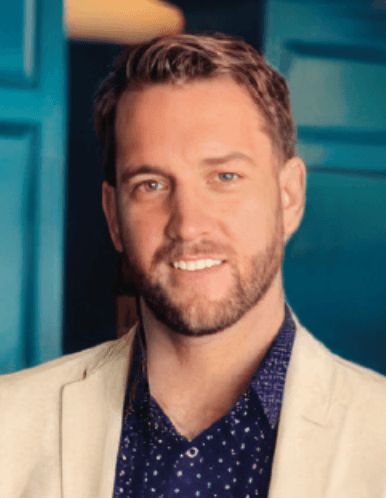
by Jon Nierman
Is your DSM practice taking longer to take off than you thought it would? You’re not alone. Many dentists start with enthusiasm, invest in great training, and choose a high-quality appliance, only to find growth slower than expected. The reason? Success in dental sleep medicine isn’t just about clinical skills, hopes and dreams. The practices that truly thrive master three core systems: Medical Billing, Referrals, and Case Acceptance.
While clinical excellence is essential, the real foundation of a successful dental sleep medicine (DSM) practice lies in three core systems: Medical Billing, Referrals, and Case Acceptance.
-
Medical Billing
Whether you handle medical billing in-house or outsource it, your team must understand the workflow from a dental practice perspective. This goes beyond submitting claims. It is about preparing, documenting, and communicating.
Two guiding principles from Rose Nierman can help your team master this process:
“It’s what you do upfront that counts.”
Every successful dental sleep case starts with a strong medical Verification of Benefits (VOB). Knowing the policy criteria, deductible status, and coverage limitations allows you to present clear financial expectations to the patient from the start. This transparency builds trust, reduces surprises, and sets the tone for smoother case acceptance and treatment success.
“Get your ducks in a row.”
Proper documentation is your golden ticket to not only medical billing, but also referrals. The sleep study, physician records, exam findings, narrative reports, and meeting the insurance policy criteria is the key to showing medical necessity. When documentation is incomplete, claims get denied or delayed. A software designed for DSM can streamline this process and help you generate accurate, professional SOAP reports.
Ask yourself:
- Is your team confident in the DSM billing process?
- Are you setting accurate expectations with patients regarding coverage?
- Are you finding that insurers are frequently asking for more documentation?
-
Physician Referrals
Referrals are the engine that drives patient flow in a dental sleep practice. Yet many dental teams hesitate to pursue these partnerships.
There are two key groups to focus on when building your referral network: the sleep community and the broader physician community. Both are essential components of a strong dental sleep medicine growth strategy.
- The Sleep World. While it may feel intimidating at first to engage with sleep professionals as a dentist, the reality is that many sleep providers are actively seeking alternatives for their CPAP-intolerant patients. Your outreach should go beyond sleep physicians. Look to connect with RPSGTs, sleep lab directors, and sleep technologists, they often play a vital role in guiding patients toward follow-up care and oral appliance therapy.
- The Physician World. There is tremendous opportunity in building relationships with local primary care physicians, ENTs, cardiologists, pulmonologists, and even other general dentists. A practical starting point is to compile a list of your sleep patients’ shared providers. From there, implement a system for consistent communication.
Tools like DentalWriter Plus make this easy by generating narrative reports and SOAP notes that can be sent directly to each provider involved in the patient’s care. This not only strengthens the referral loop but positions your practice as the trusted local expert in dental sleep medicine.
When you present yourself as a collaborative partner focused on patient outcomes, you open the door to strong, long-term referral relationships.
Here are some ways to build a reliable referral system:
- Screen and refer dental patients you suspect of having a sleep disorder to local sleep labs
- Send SOAP reports to the patient’s primary care provider and specialists, including progress updates
- Provide a DSM packet that includes a cover letter, literature, patient brochures, and an oral appliance Rx template for sleep labs and medical offices
- Host short educational lunch-and-learns for local medical offices
Not every provider will refer immediately, but when you keep showing up and offering value, your credibility will grow along with your network.
Shift the conversation from clinical details to emotional benefits. Your patients will be far more motivated to move forward with treatment when they can clearly picture the life they want after resolving their sleep issues.
-
Case Acceptance
Your team must be trained to connect treatment to outcomes that matter to each individual patient.
This starts with:
- Building trust and rapport from the very first interaction
- Verifying benefits ahead of the visit so patients are prepared
- Asking questions to uncover the patient’s priorities and daily struggles
- Helping patients envision how treatment can improve their life
Example conversation:
Patient: “I wake up exhausted every morning.”
Team member: “That must be frustrating. How would your day look if you woke up feeling refreshed?”
Shift the conversation from clinical details to emotional benefits. Your patients will be far more motivated to move forward with treatment when they can clearly picture the life they want after resolving their sleep issues.
The Takeaway
Strong clinical skills will always matter, but they are not enough on their own. Your practice will only reach its full potential when your systems are just as strong as your clinical protocols.
Want a place to start?
- Review one recent case for documentation quality and completeness
- Make sending SOAP reports a non-negotiable part of your workflow
- Role-play case presentations that focus on the patient’s goals
Clinical excellence sets the foundation. But your systems are what will allow your practice to grow, scale, and serve more patients at a higher level.





 Jon Nierman, President of Nierman Practice Management (NPM), is recognized for his contributions to continuing education, medical billing, and technology in the field of dental sleep medicine and TMD. Since 2010, Jon has led and expanded NPM’s renowned continuing education programs. His leadership at Nierman Practice Management drove the development of the next-generation dental sleep medicine platform DentalWriter Plus. A graduate of the Georgia Institute of Technology and an avid pianist, Jon brings a unique blend of technical expertise and creativity to the field.
Jon Nierman, President of Nierman Practice Management (NPM), is recognized for his contributions to continuing education, medical billing, and technology in the field of dental sleep medicine and TMD. Since 2010, Jon has led and expanded NPM’s renowned continuing education programs. His leadership at Nierman Practice Management drove the development of the next-generation dental sleep medicine platform DentalWriter Plus. A graduate of the Georgia Institute of Technology and an avid pianist, Jon brings a unique blend of technical expertise and creativity to the field.